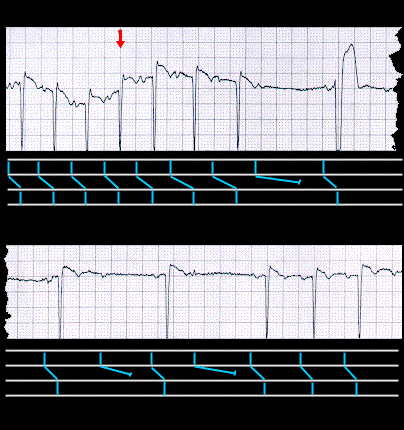
[NEED TO LABEL THE LINES ON THE LADDER DIAGRAM] The continuous ECG strip shown here was recorded from a patient with sinus tachycardia (rate 150/min) who was given adenosine to rule out the possibility of a reentrant AV nodal tachycardia or atrial flutter with 2:1 AV conduction. Almost immediately after the intravenous administration of 0.6mg of adenosine (arrow), there is slowing of the rate, the sinus P waves become more obvious and there is progressive prolongation of the PR interval with the development of Wenckebach AV block and then 2:1 AV block. These effects, which rule out the diagnoses of AV nodal reentry tachycardia or atrial flutter and establish the diagnosis of sinus tachycardia, last for less than 2.5 seconds, reflecting the very short half life of the drug
